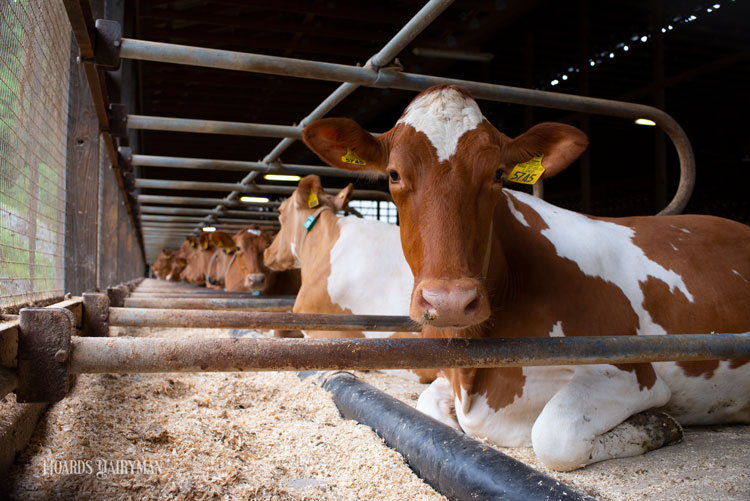
Before and after calving, a dairy cow’s body experiences significant change. This includes the uterus, which can go from carrying a calf, placenta, and fluids down to the size of an adult’s hand in just a few days.
“The postpartum uterus is a pretty dynamic organ,” said Mark Thomas, D.V.M., during the American Association of Bovine Practitioners (AABP) virtual annual meeting. Thomas, a partner in Dairy Health and Management Services in Lowville, N.Y., discussed uterine diseases in his presentation.
He shared that 30% to 50% of fresh cows are affected by some sort of metabolic or infectious disease. When it comes to the uterus, the most common ailments are retained placenta, metritis, and endometritis.
Thomas said it is very important to make the correct diagnosis when evaluating fresh cows to understand what disease needs to be treated. Retained placenta is a failure to expel fetal membranes within 24 hours after calving. Metritis is a severe infection and inflammation of all layers of the uterus that causes systemic illness early in lactation. Endometritis is chronic, low grade infection and superficial inflammation of the endometrium that can linger into the lactation.
Risk factors leading to disease include uterine damage, which can be caused by stillbirths, twins, dystocia, or a cesarean section. Lack of immune system response is another risk factor. So are metabolic issues, such as hypocalcemia, ketosis, or displaced abomasum. Thomas emphasized the important relationship between nutrition, dry matter intake, and maintaining fresh cow health.
While there is an opportunity on many dairy farms to improve uterine health after calving, Thomas said there are many other diseases (such as mastitis) that have a larger economic impact. Still, cases of retained placenta that progress into metritis and endometritis can lower milk production; raise the risk of ketosis, displaced abomasum, and mastitis; and lead to more days open.
When it comes to uterine health and cow health in general, “Prevention over treatment, that’s always our goal,” Thomas said. He said these basic principles that promote overall fresh cow health will also support uterine health:
- Avoid dietary energy above the nutritional requirement in the far-off dry period.
- Provide unrestricted feedbunk access (allow all cows to eat at the same time, with no more than four cows per every five headlocks).
- Provide enough space to allow cows to lie for approximately 12 hours per day (one stall per cow).
- Minimize pen moves and social group changes.
- Build dry cow and early lactation pens for 140% of the expected average number of calvings per month.
- Provide heat abatement when the temperature humidity index exceeds 72°F.
- Maintain a body condition score (BCS) between 3 and 3.25 at calving, and maintain a minimum BCS of 2.5 in lactation.








